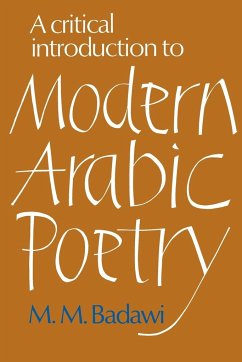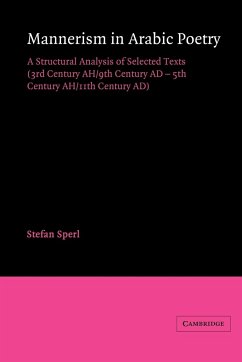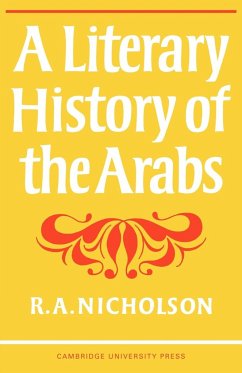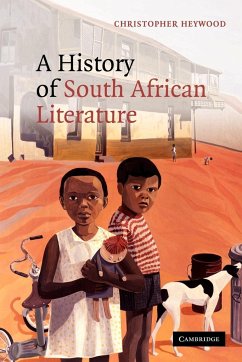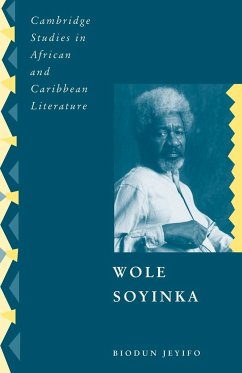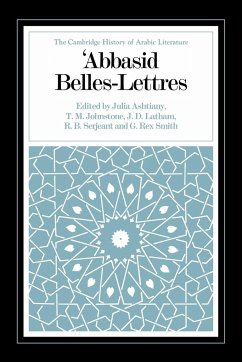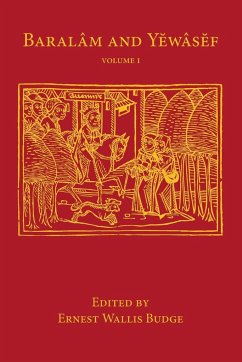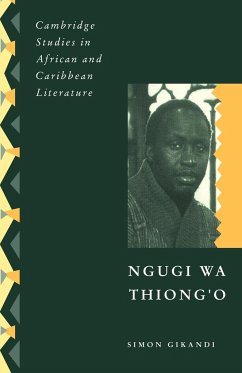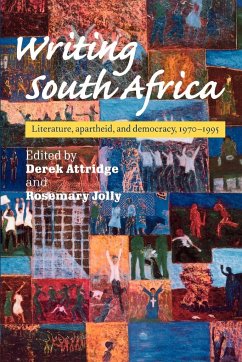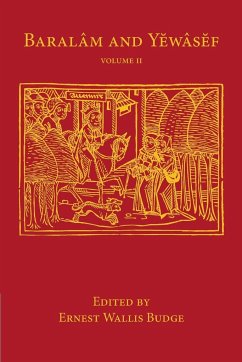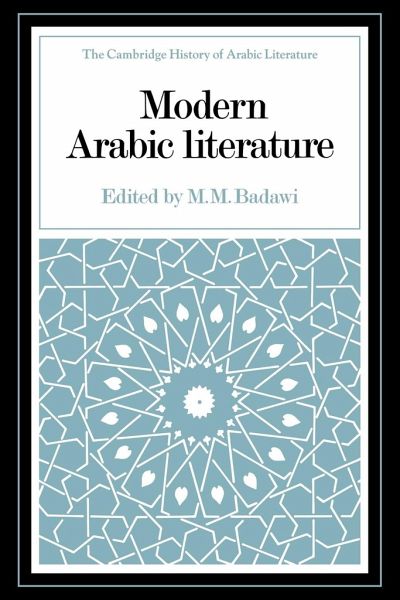
Modern Arabic Literature
Versandkostenfrei!
Versandfertig in 1-2 Wochen
51,99 €
inkl. MwSt.
Weitere Ausgaben:

PAYBACK Punkte
26 °P sammeln!
This volume provides an authoritative survey of creative writing in Arabic from the mid-nineteenth century to the present day.This volume of the Cambridge History of Arabic Literature provides an authoritative, comprehensive critical survey of creative writing in Arabic from the mid-nineteenth century to the present day. With the spread of secular education, printing and journalism, a new reading public emerged. Against the background of the disintegration of the Ottoman Empire, the rise of nationalism, and the conflict between Islam and increasing Westernization, the traditional conception of...
This volume provides an authoritative survey of creative writing in Arabic from the mid-nineteenth century to the present day.
This volume of the Cambridge History of Arabic Literature provides an authoritative, comprehensive critical survey of creative writing in Arabic from the mid-nineteenth century to the present day. With the spread of secular education, printing and journalism, a new reading public emerged. Against the background of the disintegration of the Ottoman Empire, the rise of nationalism, and the conflict between Islam and increasing Westernization, the traditional conception of literature as a display of verbal skill was replaced by the view that literature should reflect and indeed change social and political reality. A significant translation movement resulted in the borrowing of Western ideas and literary forms: the novel, the short story and drama. This book examines the attempts made by Arab men and women to adapt the new imported forms as well as the indigenous literary tradition to meet the requirements of the modern world. Quoted material is given in English translation, and there is an extensive bibliography.
Review quote:
"Unprecedented in its monumental range and scale this book is a valuable and welcome addition to the growing body of scholarly works in English that deal with modern Arabic literature....A keen awareness of the intimate relation between modern Arabic literature and the other discursive practices and discourses that shape modern Arab identity permeates the chapters of the book....This is a major source of valuable information and critical acumen that will stand in good stead every student of modern Arabic literature, including, or perhaps especially, those genuinely interested in literary theory."
Journal of Arabic Literature
"Badawi's work certainly fills a gap in the field and should be a useful tool for students of Arabic literature and a valuable reference for all interested scholars."
Journal of the American Oriental Society
Table of contents:
Editorial note; Chronological table of events; Map of the Arab world; 1. Introduction: I. The background M. M. Badawi; II. Translations and adaptations 1834-1914 Pierre Cachia; 2. The Neo-classical Arabic poets S. Somekh; 3. The Romantic poets R. C. Ostle; 4. Modernist poetry in Arabic Salma Khadra Jayyusi; 5. The beginnings of the Arabic novel Roger Allen; 6.The mature Arabic novel outside Egypt Roger Allen; 7. The Egyptian novel from Zaynab to 1980 Hilary Kilpatrick; 8. The modern Arabic short story Sabry Hafez; 9. Arabic drama: early developments M. M. Badawi; 10. Arabic drama since the thirties Ali Al-Ra'i; 11. The prose stylists Pierre Cachia; 12. The critics Pierre Cachia; 13. Arab women writers Miriam Cooke; 14. Poetry in the vernacular Marilyn Booth; Bibliography; Index.
This volume of the Cambridge History of Arabic Literature provides an authoritative, comprehensive critical survey of creative writing in Arabic from the mid-nineteenth century to the present day. With the spread of secular education, printing and journalism, a new reading public emerged. Against the background of the disintegration of the Ottoman Empire, the rise of nationalism, and the conflict between Islam and increasing Westernization, the traditional conception of literature as a display of verbal skill was replaced by the view that literature should reflect and indeed change social and political reality. A significant translation movement resulted in the borrowing of Western ideas and literary forms: the novel, the short story and drama. This book examines the attempts made by Arab men and women to adapt the new imported forms as well as the indigenous literary tradition to meet the requirements of the modern world. Quoted material is given in English translation, and there is an extensive bibliography.
Review quote:
"Unprecedented in its monumental range and scale this book is a valuable and welcome addition to the growing body of scholarly works in English that deal with modern Arabic literature....A keen awareness of the intimate relation between modern Arabic literature and the other discursive practices and discourses that shape modern Arab identity permeates the chapters of the book....This is a major source of valuable information and critical acumen that will stand in good stead every student of modern Arabic literature, including, or perhaps especially, those genuinely interested in literary theory."
Journal of Arabic Literature
"Badawi's work certainly fills a gap in the field and should be a useful tool for students of Arabic literature and a valuable reference for all interested scholars."
Journal of the American Oriental Society
Table of contents:
Editorial note; Chronological table of events; Map of the Arab world; 1. Introduction: I. The background M. M. Badawi; II. Translations and adaptations 1834-1914 Pierre Cachia; 2. The Neo-classical Arabic poets S. Somekh; 3. The Romantic poets R. C. Ostle; 4. Modernist poetry in Arabic Salma Khadra Jayyusi; 5. The beginnings of the Arabic novel Roger Allen; 6.The mature Arabic novel outside Egypt Roger Allen; 7. The Egyptian novel from Zaynab to 1980 Hilary Kilpatrick; 8. The modern Arabic short story Sabry Hafez; 9. Arabic drama: early developments M. M. Badawi; 10. Arabic drama since the thirties Ali Al-Ra'i; 11. The prose stylists Pierre Cachia; 12. The critics Pierre Cachia; 13. Arab women writers Miriam Cooke; 14. Poetry in the vernacular Marilyn Booth; Bibliography; Index.





